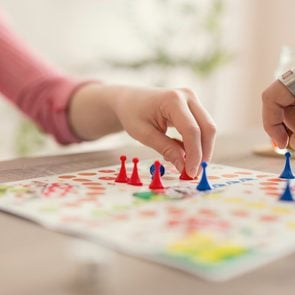Some car makers recommend replacing the brake fluid in your car every two years or 40,000 kilometres. Others don’t mention it at all. But it’s easy to do a little DIY car maintenance and test your brake fluid. Just dip a test strip into the fluid and compare the colour to the chart on the packaging.
You can’t do a complete brake fluid flush yourself, but you can do the next best thing—a fluid swap. This procedure won’t replace all the old fluid with fresh, but you’ll introduce enough new fluid to make a difference.
What You’ll Need to Change Brake Fluid:
Avoid last-minute shopping trips by having all your materials ready ahead of time. Here’s a list:
- Baster
- Brake fluid test kit
- Brake fluid
How to Change Brake Fluid Yourself, Step by Step:
Use a baster to suck out the dark brown brake fluid (brake and power steering fluids are incompatible, so use a different baster for each). Squirt it into a recycling bottle. Refill the reservoir with fresh brake fluid as shown. Then drive the vehicle for a week to mix the new fluid with the old. Repeat the procedure several times over the next few weeks until the fluid in the reservoir retains its light honey colour.
Note: The brake fluid may damage the baster’s rubber bulb, so don’t suck the fluid all the way into the bulb.
Now that you know how to change brake fluid yourself, find out the 20 automotive tools no home mechanic should be without.
Why Do We Measure BMI?
Body mass index is a metric designed to measure a person’s health status based on their weight. Although widely used, its usefulness has been increasingly called into question.
Here’s how it works: you divide your body weight (in kilograms) by your height (in metres squared). If the number you get is between 18.5 and 25, you’re considered to be at a healthy weight. Below this and you’re underweight, while above means you’re overweight or obese. BMI is used in doctors’ offices because it has no cost, is easy to calculate and can help identify risks for conditions affected by body weight, including heart disease, high blood pressure or cholesterol, sleep apnea and diabetes.
How is BMI problematic?
Although BMI cut-offs are accurate 80 per cent of the time across the world’s population, they’re most precise when measuring white men. The Quetelet Index, as BMI was first known, was formulated by Adolphe Quetelet, a 19th-century Belgian mathematician and astronomer. Quetelet used data from white European men to determine what an “average man” looked like—he never intended it as an assessment for individual health.
Dr. Sean Wharton, an internal medicine specialist in Toronto, believes healthy BMI ranges should be determined differently for different demographics. As just one example, a Stanford University study found that Black women were at risk of diabetes with a BMI of 33, whereas for white women, the cut-off is 29.
The other issue with BMI—one that touches every demographic—is that it can’t distinguish between fat and healthier sources of extra body weight. According to Dr. Fahad Razak, an internist at St. Michael’s Hospital in Toronto, a person who builds extra muscle at the gym might have a BMI that classifies them as overweight, but they’re not actually at risk of any weight-related conditions. Similarly, as people age, their bone density and muscle mass can decrease, while fat tissue can increase. They might stay at the same BMI, but since their body composition is changing, their risk may rise.
The inaccuracy of BMI doesn’t just distort health assessments—it can also have an adverse psychological impact. Studies have shown that when BMI is used to label a person as overweight, it can lead to the kind of negative body image that, rather than inspiring healthier living, creates low self-esteem and increases the risk of obesity.
What should we use instead?
There isn’t currently a solid alternative to BMI. Body-fat scales you can buy online purport to measure body-fat percentage, but they aren’t very accurate. They use bioelectric-impedance analysis—a process that runs a low grade electric current through the body and can differentiate between muscle and fat. While there’s evolving research on this method, it isn’t considered an accepted alternative to BMI, so it isn’t widely used in physicians’ offices.
Razak believes the BMI metric can still be useful as an indicator of most people’s health status, but it shouldn’t be the only one used—especially for anyone who isn’t a white male. For instance, he suggests looking at BMI in combination with waist circumference or waist-to-hip ratio, which can indicate when someone is building up too much fat in the midsection, disrupting organs and metabolism. Of course, even that measurement has to account for individual differences—and family history and lifestyle should always be taken into consideration by a doctor. “It’s not just a matter of looking at a person,” adds Wharton. “It’s listening, getting a fuller picture.”
Next, find out how stem cell therapy is saving lives.
Ladies, take a bow! The spotlight of the world is on you! Applause rings out for the preening ladies striking poses—saucy, flirty and beguiling in their own quirky ways. Their frocks suggest another era, whimsical, each ablaze in glorious colours, each adorned with trinkets, especially from the sea; anchors, shells and cutouts of mermaids flaunt their eccentricity. Their very presence brings a smile to the heart. What a performance!
These are the Painted Ladies of Grimsby, quietly making a name for themselves just steps from the historic Grimsby Beach area on Lake Ontario. They are a collection of quaint cottages resurrected with inspiration, tender loving care and gallons of colourful paint. Although no two cottages are alike, most have gingerbread trim and fancy facades.

Touring the Painted Ladies of Grimsby
We stroll along Auditorium Circle and talk to a homeowner putting the finishing touches of paint on the pickets of her fence—the pickets are fashioned like pencils. Her home is a two-storey dollhouse with a wide veranda. It features white wicker furniture covered with plump, aqua cushions and coral-coloured throws. A painted shed in her side yard, a replica of her home, is a treasure she discovered online. The woman is generous with her time, answering questions and sharing her passion with us.
The Cotton Candy Home is nearby, where another proud homeowner asks us where we’re from. “Hamilton,” we say, “just down the road.” This woman describes a unique game she has created for her visiting grandchildren. She has photographed unique decorative items on neighbouring homes. When her grandchildren visit, she sends them on scavenger hunts looking for these items. Who has the most fun with this game, the creator or the participants? If you live in the Cotton Candy House, you have to be a special person. All the homeowners on Auditorium Circle and the surrounding area have bought into a dream and made it come true. They’ve rescued tired, old cottages and restored them to their former glory.

The Painted Ladies of Grimsby have a unique history
This area once offered a summer destination for city dwellers in the 1840s who arrived by ferry from Hamilton and Toronto. Pilings from the pier show the landing spots of the ferry boats in the water. The Methodist Church had a popular camp in this area as early as 1846, and later built an enormous auditorium called The Temple in the parkland setting of Auditorium Circle. Cottages soon popped up, replacing tents in the camp. These cottages were decorated in Victorian splendour with a playful charm.
At the turn of the 20th century a more casual secular atmosphere replaced the solemnity of the area. The place changed hands and a roller coaster, carousel, even a “movie theatre” created an exciting place for family fun. But this carnival ambiance faded in the 1930s with the creation of a new gravel highway stretching from Toronto to Niagara Falls. Orchards with peach, cherry and apple trees dotted the new highway.
Changes are inevitable but traces of the Methodist camp can still be detected in this Grimsby Beach area. Bell’s Park is home to the old iron bell made to be part of the Temple; the stone monument in the centre of the Circle commemorates the camp’s existence; even the street names, Temple Lane and Auditorium Circle, are throwbacks to the Methodist camp. And the Ladies, the Painted Ladies of Grimsby, have refreshed themselves with old Victorian charm. Ladies, you dazzle! We applaud you.
Next, check out these 10 great day trips from Hamilton.
In 2017, a few months after Meredith Davis of Guelph had her third child, her husband went back to work and she found herself alone at home, trying to manage three kids under the age of four. She was 35, and the stress of balancing her older children’s needs and caring for her new baby was taking its toll. “I felt like my life imploded,” she says. “All I could hear was this loud, glaring voice saying ‘You’re not a good mom. You’re not cut out for this.’”
The more stressed she became, the more self-critical she got, leaving her exhausted and struggling to feel present with her family. She soon contracted pneumonia and shingles—and realized she needed to do something to manage her negative self-talk.
Our interior monologue is influenced by the people in our lives (our parents and caregivers when we’re young, our peers, partners and bosses when we’re older) and the cultural messages and beliefs that surround us. And it’s active! Experts estimate we can talk to ourselves as much as 4,000 words a minute.
Our inner voice can be very helpful, reminding us where we put our keys or to be careful when we’re walking on an icy sidewalk. But challenges and stress in our relationships, jobs, financial affairs and the world around us can turn up the volume on our inner critic. This can lead to negative self-talk and, sometimes, self-sabotage—say, convincing ourselves we’ll never get that job or that we don’t deserve a partner’s love.
Luckily, there are practical actions you can take to shush your self-critical chatter.
Find Out What’s Triggering That Self-Critical Voice
A good first step in managing your inner critic is to notice what sets it off. Davis realized hers gets chatty when it comes to her work. She runs a consulting firm and, sometimes, when she thinks about growing her business, she’ll find herself thinking, Why would anyone want to meet with you? or, You’re not good enough to take on this new project.
In the past, that voice could stop her from pursuing her goals. Now she’s learned to spot her inner critic’s favourite topics and regain control. First, she’ll acknowledge the challenge she’s facing, then she’ll interrupt the self-critical talk and show herself some kindness instead. “Sometimes I just put my hand on my heart and acknowledge, ‘This is hard,’” she says.
Start by keeping a log of your triggers. Ask yourself what the situation was. What did your inner critic say? How did it make you feel? How did you react? After a few weeks, you’ll have a list of your triggers and a greater awareness of how you are or aren’t managing them. It may feel like a lot of work—and your inner critic may try to talk you out of it!—but there’s a lot at stake if you don’t act.
Ethan Kross, the author of Chatter: The Voice in Our Head, Why It Matters, and How to Harness It, warns that negative chatter can undermine our ability to think and perform. It can create friction in our relationships, and also has the potential to undermine our physical health. Research shows that self-critical talk can help fuel our stress response, which can lead to sleep disorders and an increased incidence of cardiovascular illness.
Create Some Friendly Distance
Once you’ve named your triggers, it can help to reframe the conversation. To do this, Davis asks herself: what’s a thought that’s more positive than this one and is also one that I can believe? For example, “I’m a terrible mom” becomes “Maybe I’m not the best mom in the world, but I’m trying.”
Kross’s research shows that distancing techniques are also effective in breaking the self-critical chatter loop. Say you’re ruminating on an incident where you were impatient with your parent, and your inner voice is telling you that you’re a terrible, uncaring child. Try addressing yourself in the second or third person. So instead of berating yourself with “Why did I lose my cool?” ask “Why did Christina lose her cool?” It can take the oxygen out of the shame and blame and make room for objectivity and curiosity about how to address the issue.
Jane Reichman Van Toch, a Montreal-based executive coach and consultant, has clients who struggle with impostor syndrome behaviours at work. Sometimes, when they tell her they’re not good enough for their job, she encourages them to look at their own CV and pretend it belongs to an applicant. Does this person have the skills and experience for the job? The answer, more often than not, is yes.
“We often act on our inner monologue more than we act on our outer experience,” she adds. “If we’re not managing our inner voice, then it’s going to manage us.”
Look Outside Yourself
Professional coaches, partners, friends and family can be important allies in our quest to conquer self-critical talk. Davis relies on her psychologist, her husband and a couple of favourite podcasts to give her the right tools, confidence and motivation. Together they act as sounding boards and remind her of the techniques she can use.
Research also shows that awe can be a powerful circuit breaker against our inner critic. That’s because it opens up a world of feeling beyond our own needs and wants. Awe can come in many forms: a beautiful hike in the quiet woods, seeing live music, watching your kids do something they love. It’s all about putting yourself in a different frame of mind.
Reichman Van Toch adds that fun and play can work to change the channel, too. For example, when one of her clients’ inner critics prevented them from being present and effective at work, she suggested trying an improv class—something that is all about being in the moment with others and not lost in the negative loops of their mind.
Finding strategies to manage self-critical behaviour will keep you in good stead throughout every stage of life. Luckily, it’s never too late to get started.
Next, find out how to rebuild self-esteem after your confidence has been shaken.
“Mama!”
My son, a six-year-old boy in a dinosaur T-shirt, sits across from me in front of a chessboard that once belonged to his great-grandfather. He’s holding a plastic knight in his little hand and humming quietly to himself as he debates his next move with the intensity of a chess master in his prime. His eight-year-old sister watches carefully. She’s going to play the winner, so she wants to know what she’s up against. As with any serious chess match, an episode of Wild Kratts, an animal show for kids, plays on a nearby TV.
My son turns his head toward the TV and then back again. “Did you know that hippos can’t really swim?” he offers casually. The knight moves, and he takes one of my pieces. Dammit. And wait, how is that possible about hippos? How long can they hold their breath, and what happens when they sink? Are hippo drownings an issue I’ve never known about? Our game carries on, neck and neck, the Kratt brothers continuing their impossible adventure in the background.
When I play a board game with my children, I want to win. It doesn’t matter if it’s cards or Monopoly or the children’s version of The Settlers of Catan—I’ll happily destroy them. I did not go through pregnancy and birth two humans just so I could pretend to be bad at chess. I mean, I’m not particularly good at chess, either, but I’m still going to try my best.
If they make a bad move, I let them make it. I’ll clearly explain the rules of the game, but if they fall into a trap because they weren’t paying attention, so be it—better luck next time. I love a good board game and I love my kids, and I respect them too much to treat them like delicate flowers who will wilt in the face of defeat. I’m playing to win, and they’re doing the same. Failure has an important role in childhood development and building resilience. When I take them down in Clue, I’m teaching them that it takes practice and effort to succeed. Also, I’m showing them that Mommy excels at murder-themed games.
This isn’t just my competitive streak in action—I also need to engage fully rather than watering myself down in the name of being a mom. If I sit there with my kids, letting them beat me at checkers again and again just so they feel good about themselves, I’m doing them no favours. I’m not doing myself any favours, either. I’d be performing a routine, one where I’m a playmate, not a whole person—a prop, rather than a human being with motivation and skills. I’d be bored.
My son makes his bishop do a little dance, commenting on how many of my pawns he’s taken. I move my rook and exact my revenge. “Dammit!” my child mutters under his breath. Because he is six years old, I remind him not to curse, but I’m secretly amused. We eye each other’s pieces, trying to anticipate next moves. His sister has wandered off to find a snack.
I love these times with my children, casually sprawled around the ottoman in the living room. We laugh, we get mildly frustrated when the game isn’t going our way, we chirp at each other and have fun. The competition is real, but each battle ends with a friendly “good game,” and then my children immediately request one more round. This is how we manage the after-school lull or find quiet moments on a lazy Sunday afternoon. It’s close to paradise.
So much of my life is spent with my children, nurturing their interests and abilities. I happily bake with them, sit and draw pictures, take them hiking, show them how to pick herbs or plant flowers in the garden, play tetherball in the backyard, or I read them endless stories. But I’m no good at playing dolls or pretending to be a pirate. I lack the ability to get lost in any imaginative game in which I have to be a character or, even worse, an animal.
Games, however, are where I feel at ease. They differ from other types of play-based interaction because they’re a dedicated task for my brain. I can sip a coffee while I look my kid in the eye, capture his piece with no remorse, then watch him jump up in glee when he figures out a countermove. High fives all around.
That said, the only thing that outweighs my desire to win is my pride in having happy, smart, capable children. I’m thrilled when they do beat me. It’s no different than seeing your kid fare well on their report card or score a goal in soccer—they’re succeeding, and it feels good. It may not be a milestone you note in a baby book, but when your children beat you and your partner in Pictionary for the first or the 50th time, it feels like you’ve done something right.
For years, I felt guilty about being the type of parent who begrudgingly gave horsey rides and was always quick to suggest that Daddy does them better. I didn’t give myself nearly enough credit for all the love and attention I gave to my kids because I felt so bad about the handful of things I wasn’t good at or didn’t do. Some families bond over sports or Lego, while others play backgammon. The love comes through, no matter what your quality time looks like—even if it’s a semi-intense game of chess.
My son usually takes the win these days. He’s mastered the art of playing well while half-watching a cartoon. He’ll hover a hand over his king, his eyes wandering toward the TV as he spouts a random biology fact. The more he does this, the more distracted I get, and yet he always seems to be two moves ahead. “Got you, Mama,” he’ll say triumphantly, slamming his player down as he closes in on my king. “I got you so good. Can we play again?”
We eventually run out of game time, with dinners and homework and bedtimes always on the horizon, but tomorrow, or the day after, my answer is always yes.
Next, read about how this mother and son moved past their clashing personalities and reconnected.
Excerpted from Send Me Into the Woods Alone, by Erin Pepler. Copyright © 2022, by Erin Pepler. Published by Invisible Publishing. Reproduced by arrangement with the Publisher. All rights reserved.














